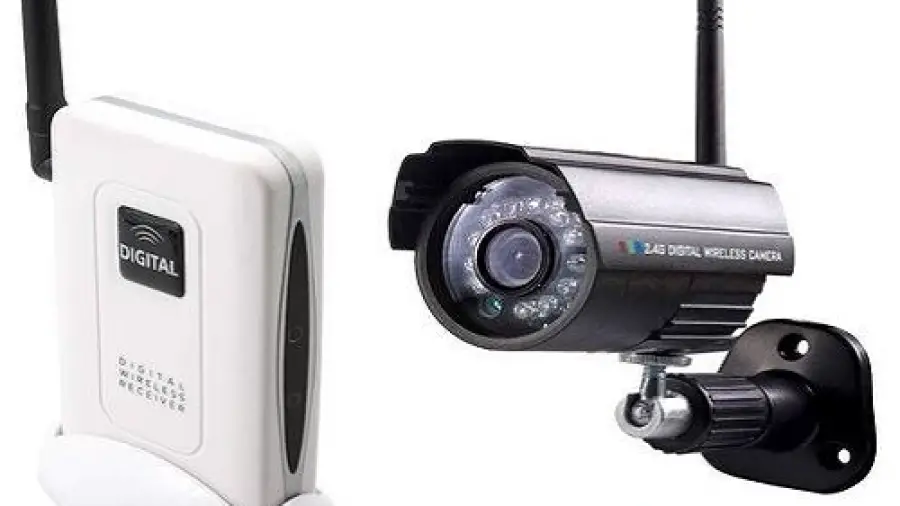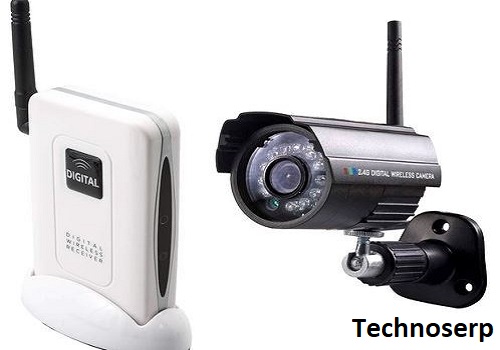In today’s modern world, wireless cameras have become increasingly popular for various uses such as surveillance, monitoring, and even capturing precious moments. How to Use Wireless Camera Without Receiver? Many people are often faced with the challenge of using a wireless camera without a receiver. Thankfully, there are alternative methods that can be employed to overcome this hurdle. In this article, we will discuss some innovative techniques to help you use a wireless camera without a receiver.
How to Use Wireless Camera Without Receiver? Step-by-Step Guide
Here’s a step-by-step guide on how to use a wireless camera without a receiver:
-
Understand the Concept:
- Wireless cameras typically rely on a receiver (such as an NVR or Wi-Fi router) to receive and process video signals.
- However, if you want to use a wireless camera without a dedicated receiver, you can hardwire it directly to your network.
-
Check Camera Compatibility:
- Ensure that your wireless camera has an additional pigtail. This pigtail serves as an alternative way to connect the camera using wires.
- The pigtail consists of two separate cables: one for power and the other for the LAN port.
-
Disconnect from the Receiver:
- If your camera is currently connected to a receiver (NVR or Wi-Fi router), disconnect it. You can do this through the camera’s mobile app or directly from the NVR interface.
- Disconnecting ensures there’s no interference between signals.
-
Reset the Camera:
- Reset the camera to its default settings. This step ensures a clean start for the hardwiring process.
- Refer to your camera’s user manual for specific instructions on how to reset it.
-
Locate the Pigtail Cables:
- Identify the pigtail cables on your camera. These are usually labeled for power (DC) and LAN (network) connections.
- The power cable provides electricity, while the LAN cable allows data transmission.
-
Connect the Pigtail Cables:
- Hardwire the camera by connecting the pigtail cables:
- Power Cable: Connect the power cable to a 12V DC power source (such as an adapter or power supply).
- LAN Cable: Connect the LAN cable to your network switch, router, or other compatible device.
- Make sure the connections are secure.
- Hardwire the camera by connecting the pigtail cables:
-
Configure Network Settings:
- Access your camera’s settings through the mobile app or web interface.
- Set up the network configuration:
- Choose static or dynamic IP (based on your network setup).
- Enter the appropriate IP address, subnet mask, gateway, and DNS settings.
-
Test the Connection:
- Power on the camera and check if it’s online.
- Access the camera feed through the app or a web browser using the assigned IP address.
-
Storage Options:
- Without a dedicated receiver, you won’t have automatic video storage.
- Consider these options:
- SD Card: Some wireless cameras have built-in SD card slots. Insert an SD card for local storage.
- Cloud Storage: Use a third-party cloud service to store footage (requires an internet connection).
-
Monitor and Maintain:
- Regularly check the camera feed to ensure it’s functioning properly.
- Keep the camera’s firmware updated for security and performance improvements.
Utilize a Wi-Fi Connection
One of the easiest ways to use a wireless camera without a receiver is by leveraging a Wi-Fi connection. Most wireless cameras these days come with built-in Wi-Fi capabilities, allowing you to connect them directly to your smartphone, tablet, or computer. Simply download the camera’s corresponding app, connect it to your Wi-Fi network, and you’ll be able to access the camera’s feed remotely from your device.
Connect the Camera to a Computer
If your wireless camera doesn’t have Wi-Fi capabilities, another option is to connect it directly to a computer. You can do this by utilizing a USB adapter that can receive the camera’s video signal. Once connected, you can use various software applications to view and record the camera’s footage on your computer. This method provides an effective alternative to using a receiver and allows you to have a dedicated display for monitoring the camera’s feed.
Stream the Camera’s Feed to a Smart TV
If you have a smart TV with an internet connection, you can stream the wireless camera’s feed directly to your television. Many wireless cameras support streaming protocols such as DLNA, allowing you to connect and display the camera’s video on the big screen. This method is particularly useful for surveillance purposes, as you can keep an eye on your property without the need for a receiver.
Use a Video Capture Device
Another option is to use a video capture device that can receive the wireless camera’s signal and display it on a monitor or TV.
These devices typically have RCA or HDMI inputs, which can be connected to the camera’s video outputs. Once connected, you can use the video capture software provided with the device to view and record the camera’s footage. This method is especially helpful if you want a dedicated display for your camera’s feed.
Employ a Network Video Recorder (NVR)
If you’re looking for a more professional solution, you can consider using a Network Video Recorder (NVR). An NVR is a device specifically designed for capturing and storing video from IP cameras. It allows you to connect multiple wireless cameras to a centralized unit, eliminating the need for individual receivers. With an NVR, you can easily monitor and record the footage from your wireless cameras, providing a comprehensive surveillance solution.
Frequently Asked Questions On How To Use Wireless Camera Without Receiver
Can A Wireless Camera Work Without A Receiver?
Yes, some wireless cameras can directly connect to smartphones or computers for live viewing.
What Are The Benefits Of Using A Wireless Camera Without A Receiver?
Convenience, portability, and easy setup are key benefits of using a wireless camera without a receiver.
How Can I Connect A Wireless Camera Without A Receiver To My Smartphone?
You can connect by using the camera’s dedicated app or accessing it through a web browser.
Are There Any Limitations To Using A Wireless Camera Without A Receiver?
The wireless range and potential signal interference are considerations when using a wireless camera without a receiver.
What Features Should I Look For In A Wireless Camera Without A Receiver?
Look for a reliable wireless connection, high-quality image resolution, and user-friendly interface.
Can I Use A Wireless Camera Without A Receiver For Outdoor Surveillance?
Yes, there are wireless cameras without a receiver specifically designed for outdoor use and weather resistance.
Conclusion
While using a wireless camera without a receiver may seem like a challenge, there are several innovative methods available to overcome this limitation. Whether it’s utilizing a Wi-Fi connection, connecting the camera to a computer, streaming the camera’s feed to a smart TV, using a video capture device, or employing a Network Video Recorder (NVR), these alternatives provide flexible and practical solutions for using wireless cameras.
By implementing these techniques, you can take advantage of the convenience and versatility that wireless cameras offer, even without a traditional receiver.

